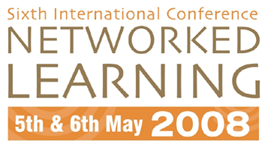

A World I Don't Inhabit: Disquiet and Identity In Second Life and Facebook
Stuart Boon, Christine Sinclair
CAPLE, University of Strathclyde,stuart.boon@strath.ac.uk, christine.sinclair@strath.ac.uk
Abstract
Much of the rhetoric around online digital spaces understandably celebrates the potential of new environments such as Second Life and Facebook. These are spaces where human beings can creatively expand their personalities, activities, and opportunities for learning and communication. However, the stories emerging from using these spaces are not always positive. The authors use their own experiences of social software to argue for the need for caution in its uses in education. They particularly draw attention to difficulties in engagement, the effects on identity, an emphasis on superficial issues, lack of coherence, and problems with authenticity and trust. While Facebook and Second Life appear to have potential for educational applications, the disquiet associated with them may need to be taken into account: and this can affect both students and their teachers. Various questions are raised about what is happening when people are “performing” their identities online and what the implications are for those who are educating them or being educated by them.
One of the authors is a student on an online course and extracts from her blogs and journal capture the emotional and psychological effects of engaging in these new worlds at the time it happened. She has been curious and puzzled about her reluctance to engage in these spaces and some of her contributions point to feelings of loss of control over values that she has held dear. She highlights concerns about appearance and presentation of self that do not arise to the same extent in real life. However, some of these concerns are taken back to real life experience. An arguably less superficial issue is one about the exposure of the ‘darker side’ of human nature and a concern about whether that means it is there all the time. Both authors have noticed changes in their responses over time and point to the need for integration and coherence for ‘virtual identities’ to play an appropriate part in higher education. The paper makes it clear that such discomfort and disquiet are not to be rejected out of hand; the process actually encourages students and staff to engage with the important intellectual and moral issues and to look at them anew.
The situation is made more complex by the interplay between students and their teachers and the concerns about the colonisation of young people’s online spaces. Attention is drawn not just to students’ responses to education in such spaces but also the way teachers represent themselves there. When a teacher becomes a student online, then these relationships begin to present themselves as problematic.
There are many potential educational benefits from these new spaces and the authors particularly welcome creative opportunities for including people who have been previously marginalised in higher education. The warnings that are emerging from the paper relate to unanticipated side effects and the risks of losing some of our well-integrated senses of self and community. The paper raises more questions than it answers and suggests that there is an urgent need to theorise online identity, roles of academics and students and codes of practice in such environments. If social software has a serious place in academic life, these issues will need to be widely debated. It is hoped to stimulate such a debate at the conference and to return to a future one with a more theoretically developed view of how to respond to, engage in and teach about such significant social spaces.
| About NLC |
2008 Conference Papers
| Conference Committee| Keynote
Speakers
| Papers from previous NL conferences |Research Seminars| Current Conference
| Sponsors | Contact
|
